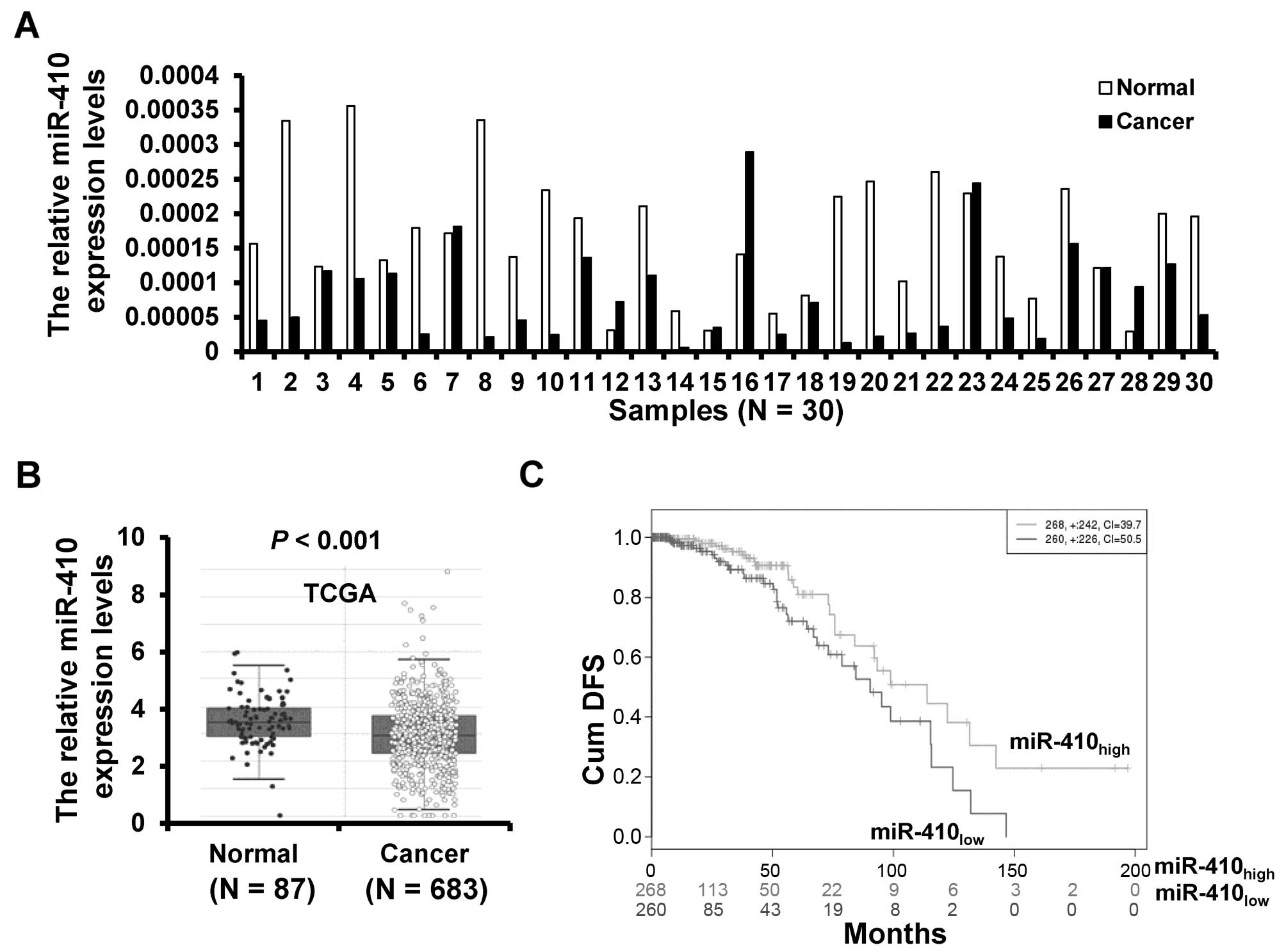miR-410-3p suppresses breast cancer progression by targeting Snail
4.8 (469) · $ 5.50 · In stock
miR-410-3p acts as an oncogene or tumor-suppressor gene in various types of cancer. However, its role in breast cancer remains unknown. In the present study, expression of miR-410-3p in 30 breast cancer and paired adjacent normal tissues was detected by RT-qPCR. The expression of miR-410-3p was downregulated in 76.7% of the breast cancer samples. To further validate the expression of miR-410-3p in breast cancer, we analyzed miR-410-3p expression profiling data set from The Cancer Genome Atlas (TCGA) including 683 breast cancer and 87 normal breast tissues. We observed that the expression of miR-410-3p was downregulated in breast cancer tissues. Next, we investigated the influence of miR-410-3p on cell proliferation by transiently transfecting the miR-410-3p mimic or inhibitor, as well as their corresponding controls in the MDA-MB-231 and MCF7 cell lines. miR-410-3p overexpression reduced cell growth, colony formation and the number of EdU-positive cells in the MDA-MB-231 cells. In contrast, inhibition of miR-410-3p in the MCF7 cells resulted in a higher proliferation rate as assessed by MTT assay, plate colony formation and EdU assays. Furthermore, miR-410-3p inhibited epithelial-mesenchymal transition. In addition, Snail was found to be a direct target of miR-410-3p based on a luciferase assay. Overexpression of Snail was able to rescue the effect of miR-410-3p in breast cancer cells. Moreover, miR‑410-3p was inversely expressed with Snail in breast cancer samples. Our data provide new knowledge regarding the role of miR-410-3p in breast cancer progression.

CircTMEM59 Serves as miR-410-3p Sponge to Inhibit the

miR-410 induces both epithelial–mesenchymal transition and

Exosome‐delivered miR‐410‐3p reverses epithelial‐mesenchymal
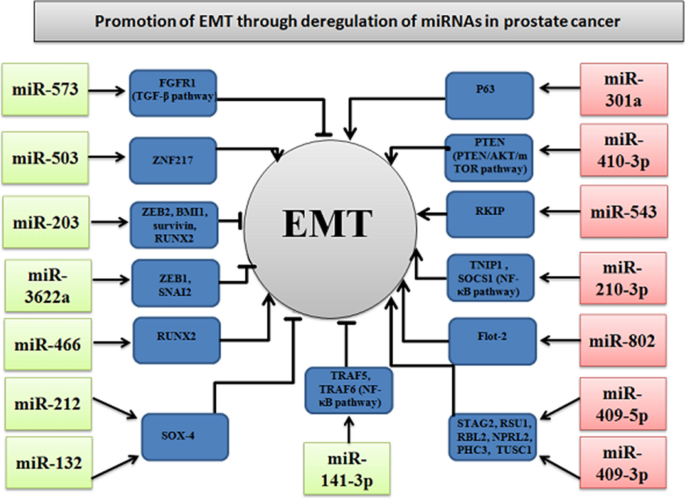
Systematic review and meta-analysis of the prognostic significance of microRNAs related to metastatic and EMT process among prostate cancer patients, Journal of Translational Medicine

Long non-coding RNA NEAT1 promotes bladder progression through regulating miR-410 mediated HMGB1 - ScienceDirect
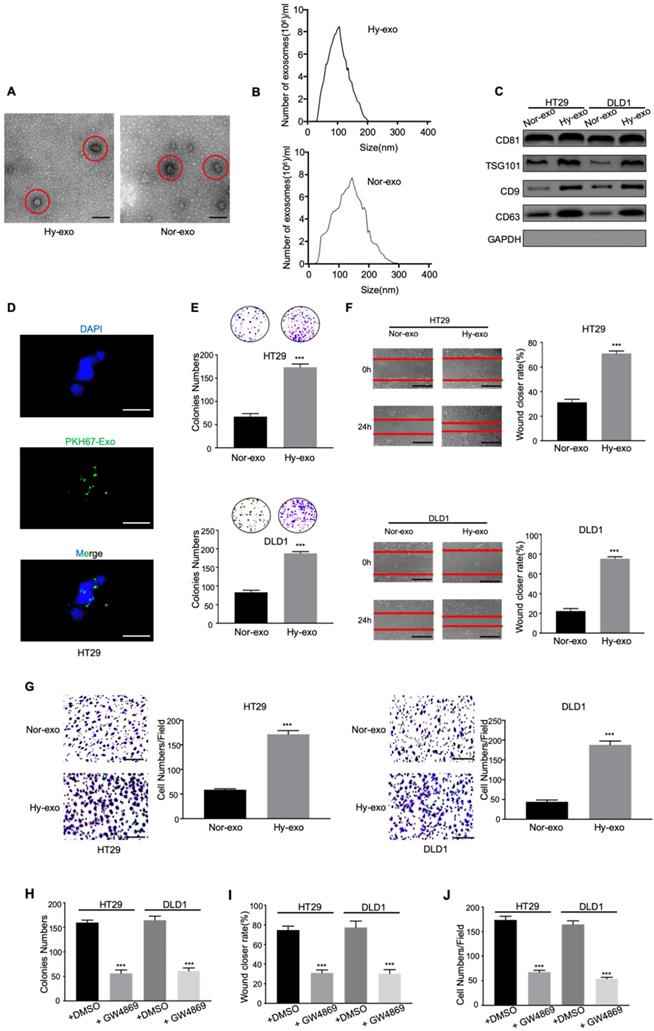
Exosomes Derived from Hypoxic Colorectal Cancer Cells Transfer miR

Snail and Cripto-1 exogenous expression causes alteration in EMT and

Exosomes Derived from Hypoxic Colorectal Cancer Cells Transfer miR

Catapol attenuates the aseptic inflammatory response to hepatic I/R injury in vivo and in vitro by inhibiting the HMGB1/TLR-4/NF-κB signaling pathway via the microRNA-410–3p - ScienceDirect

Long non-coding RNA NEAT1 promotes bladder progression through regulating miR-410 mediated HMGB1 - ScienceDirect
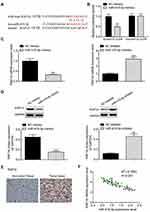
Decreased expression of miR-410-3p correlates with poor prognosis
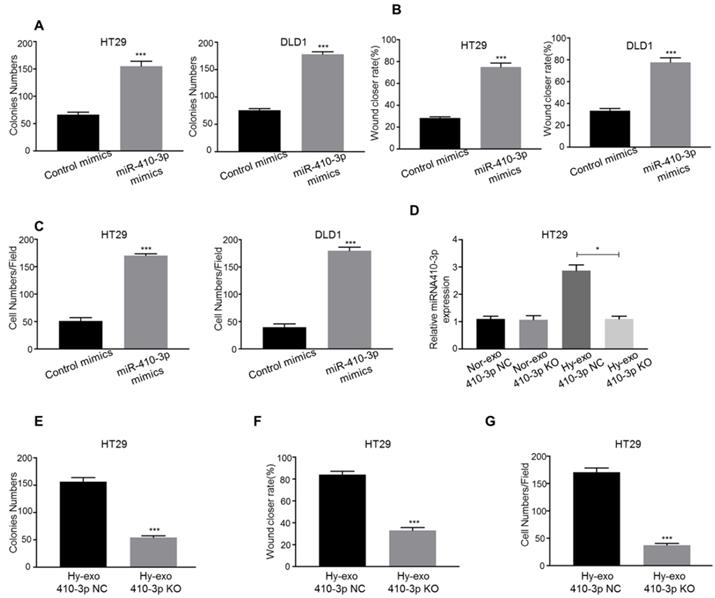
Exosomes Derived from Hypoxic Colorectal Cancer Cells Transfer miR-410-3p to Regulate Tumor Progression

NEAT1 as a competing endogenous RNA in tumorigenesis of various












